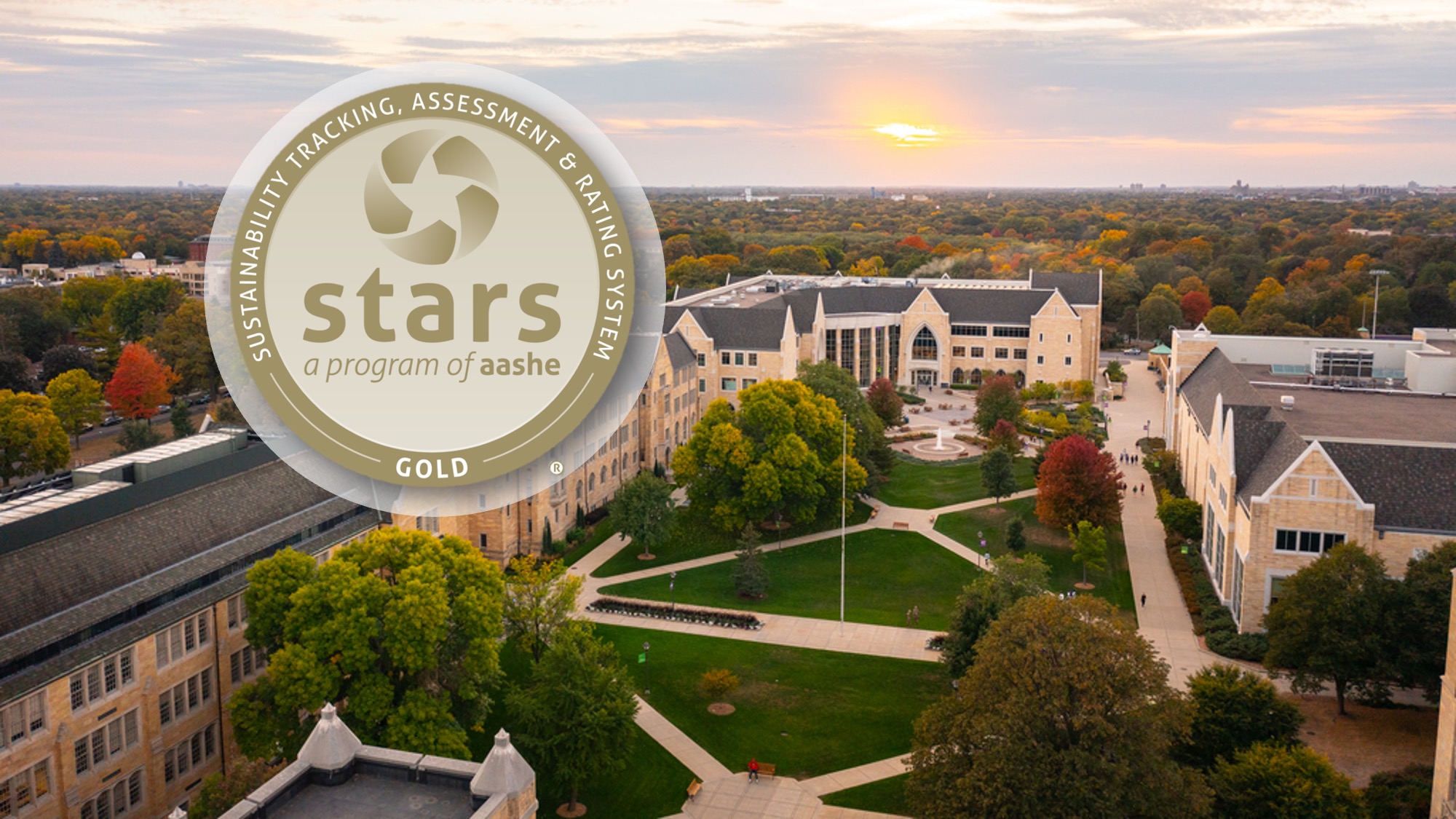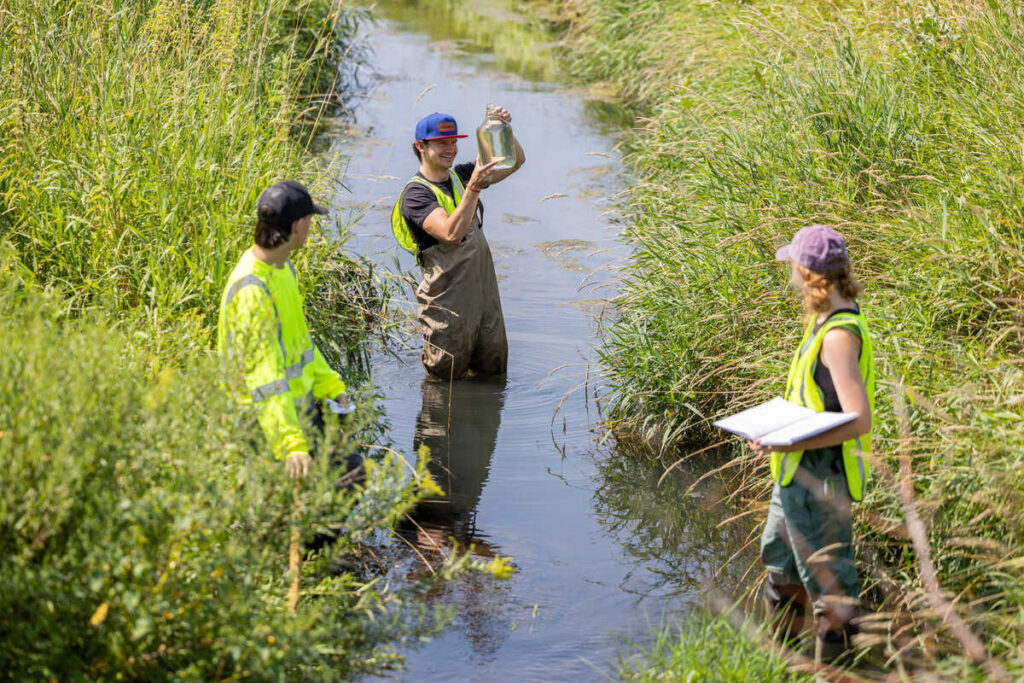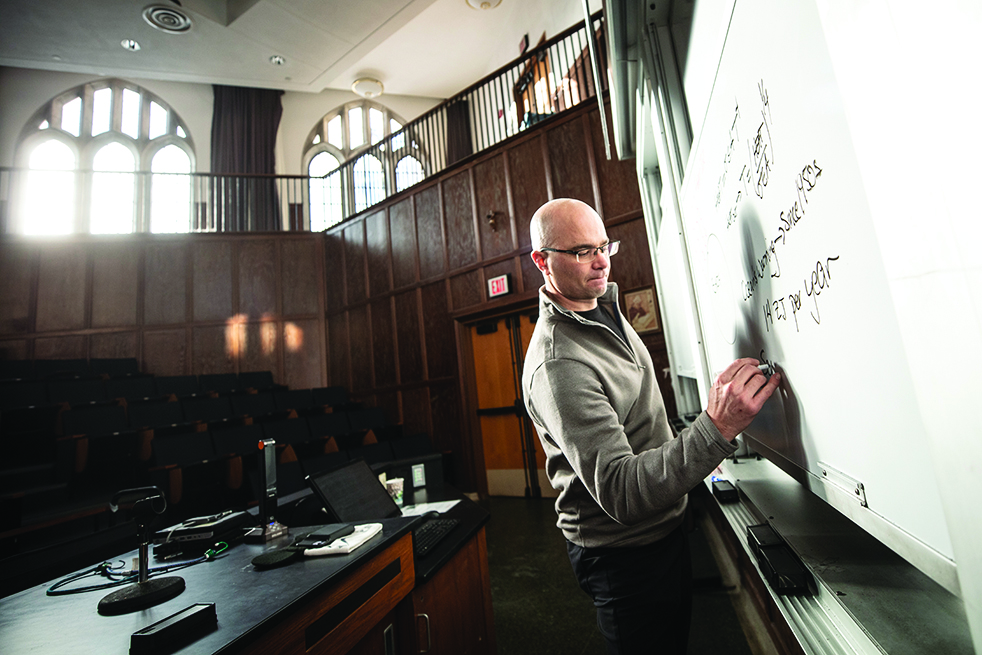The University of St. Thomas has once again earned a STARS gold rating in recognition of its sustainability achievements from the Association for the Advancement of Sustainability in Higher Education (AASHE). STARS, the Sustainability Tracking, Assessment & Rating System, is a widely recognized framework for publicly reporting comprehensive information related to a college or university’s sustainability performance, with more than 900 participating institutions across 40 countries.
Live and work sustainably: a St. Thomas priority
What does sustainability mean to you? Ask 10 people this question, and you’ll likely receive 10 different answers.
“At St. Thomas, we seek to foster interconnected human and environmental well-being in the present and for future generations, integrating ecological, social, and economic dimensions of sustainability with multiple pathways for engagement,” said Dr. Maria Dahmus, director of the Office of Sustainability Initiatives and Sustainable Communities Partnership.
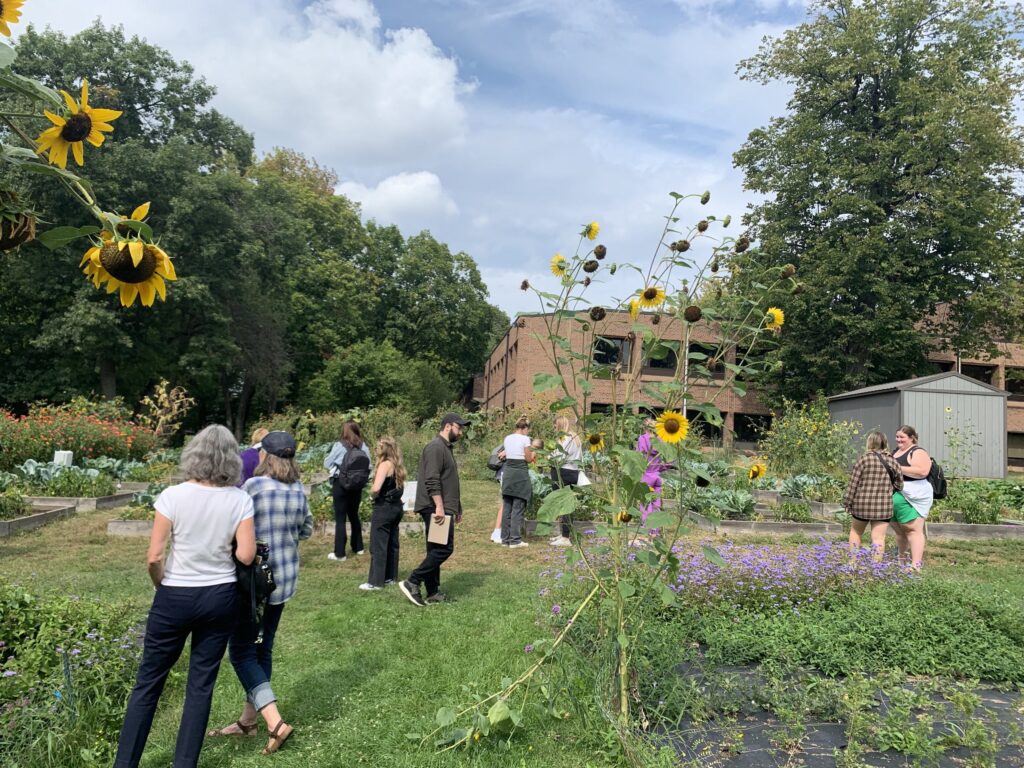
Similarly, AASHE STARS defines sustainability as encompassing human and ecological health, social justice, secure livelihoods, and a better world for all generations. “STARS translates this inclusive view of sustainability into measurable objectives at a campus level,” Dahmus said. “It is a framework that allows us to track progress, analyze change over time, and identify areas for improvement, and it facilitates information sharing across institutions to learn from each other.”
Earning a STARS gold rating is also a central goal in the St. Thomas 2025 “Live and Work Sustainably” strategic priority. In his executive letter to the 2024 STARS report, University of St. Thomas President Rob Vischer noted that STARS “remains an essential tool for underscoring and advancing our commitment to sustainability.”
What STARS measures: sustainability across campus
From the design of St. Thomas buildings to how the university cleans them, from real-world learning in partnership with the community to student peer-to-peer education, from the materials used on campus each day to how they are reused and recycled to reduce waste, and more – STARS measures sustainability in daily life and experience on campus, both inside and outside the classroom.
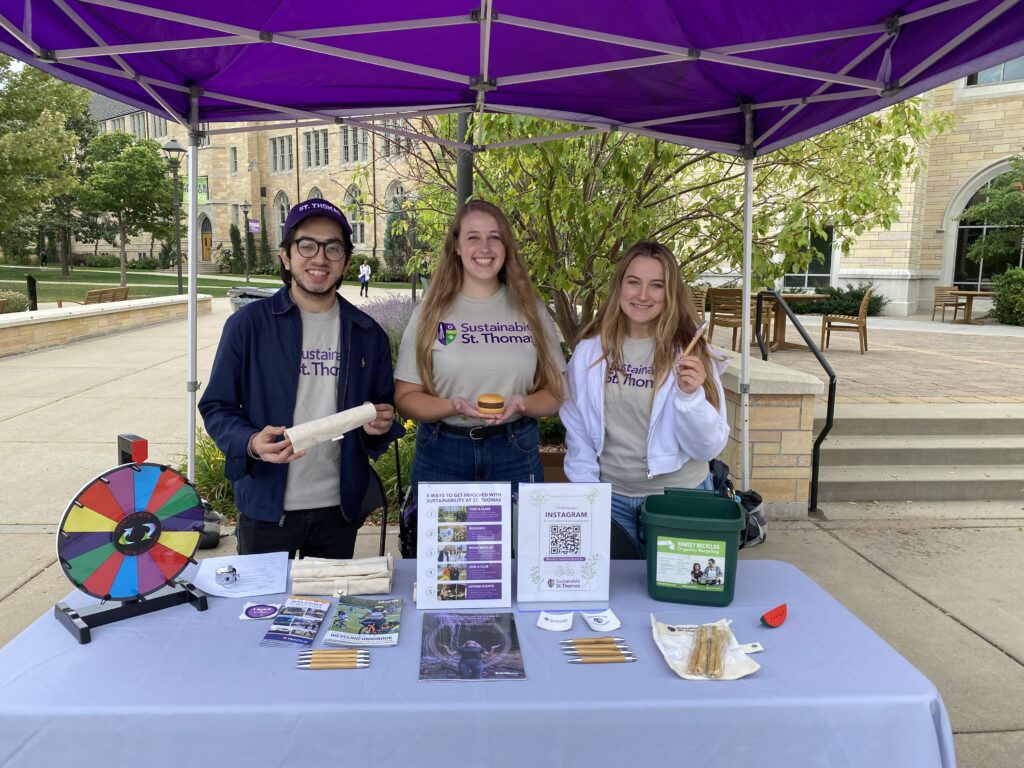
“This rating represents the multifaceted and often behind-the-scenes leadership and work of staff, faculty, and students across campus each day,” Dahmus said.
Dr. Maria DahmusThis rating represents the multifaceted and often behind-the-scenes leadership and work of staff, faculty, and students across campus each day.”
St. Thomas completed its first STARS report in 2018, earning a silver rating, its second report in 2021, improving to a gold rating, and its third report in 2024, once again earning a gold rating with improvement in overall sustainability performance in all categories – academics, engagement, operations, and planning and administration – and full points earned in innovation and leadership.
This comprehensive assessment is only possible through reporting contributions from units across campus. “We greatly appreciate the effort of staff, faculty and students who make this reporting process possible,” said Rachel Schauer, program manager for the Office of Sustainability Initiatives, who coordinated data collection for the STARS report. “We are proud of the work this report represents and are excited to celebrate these accomplishments as well as continue to work toward advancing sustainability on campus.”
Snapshots from STARS
The university’s full STARS report covers 71 credit areas and is available on the AASHE STARS website. The following snapshots give a sense of the broad range of the many efforts across campus included in the comprehensive report.
- St. Thomas reduced carbon emissions by over 50% from the university’s 2008 baseline through improvements to heating distribution and control systems, air handling systems, lighting systems, and energy management controls.
- 79% of academic departments offer at least one course that addresses sustainability and 90% of all academic departments have at least one faculty member who conducts sustainability research.
- The Center for Microgrid Research at St. Thomas, one of the only student-focused microgrid research facilities in the nation, is dedicated to advancing a secure, resilient, and carbon-free electric grid for the 21st century.
- 79% of all expenditures on cleaning and janitorial products are third-party certified to meet recognized sustainability standards.
- The Sustainable Communities Partnership integrates sustainability projects important to government and campus partners into St. Thomas courses across disciplines, engaging students in real-world, applied learning and creative problem-solving.
- St. Thomas has a structured assessment process to improve diversity, equity and inclusion on campus.

- The university launched a Graduate Certificate in Sustainability.
- The university has been recognized as a Voter Friendly Campus with campus initiatives for voter education and support.
- 100% of the university’s expenditures on electronics are for EPEAT Gold registered products.
- Student leaders with the St. Thomas Global Justice Movement through Catholic Relief Services work to combat climate change by advocating for those most impacted.
- The Sustainability Arts Initiative explores interconnections of human and environmental well-being on campus and in the community through arts-based experiential engagement to bring to life community sustainability goals for people of all ages.
- The Student Sustainability Leadership Program provides peer-to-peer education and outreach events on sustainability topics including waste reduction and campus ecology that are available to all students.
- Student leaders run Tommie’s Closet, a clothing pop-up for St. Thomas students to shop for free and for students, staff, faculty, and alumni to donate gently used clothing.
- The St. Thomas Pollinator Path beds are designed to provide food and habitat for native pollinators, including the endangered rusty-patched bumble bee, and pollinator populations are assessed regularly from May to October.
- St. Thomas collects and donates meals, books, clothing, and electronics to community organizations and achieved a waste diversion rate of 57% in 2022.
- The university’s St. Thomas 2025 strategic plan includes sustainability as a strategic priority.
The University of St. Thomas is also committed to obtaining a minimum of LEED (Leadership in Energy and Environmental Design) Silver certification for all new buildings larger than 25,000 square feet – and has received recognition for its leadership in green building design. St. Thomas was named a 2021 USGBC Regional Leadership Award recipient by the U.S. Green Building Council. Tommie East, now Frey Hall, earned LEED Platinum Certification, the first midrise residential building in the Midwest, the sixth building in the U.S., and the seventh building in the world to achieve this rating in its category. Tommie North is LEED Silver certified, and the Lee and Penny Anderson Arena will also seek LEED Silver certification.
The Schoenecker Center, which officially opened its doors on Feb. 5, will receive confirmation of its LEED certification this summer. A few of the sustainability highlights of the Schoenecker Center in and around the building include:
- Recycled 80% of waste during the course of construction.
- Reduced indoor water use by 38% with the use of low-flow fixtures.
- Rainwater is collected in a 241,000-gallon underground cistern and reused for irrigation, reducing 100% of outdoor water use.
- Building HVAC systems are 27% more efficient than required by ASHRAE 90.1-2010.
- 75% of regularly occupied areas have access to exterior views.
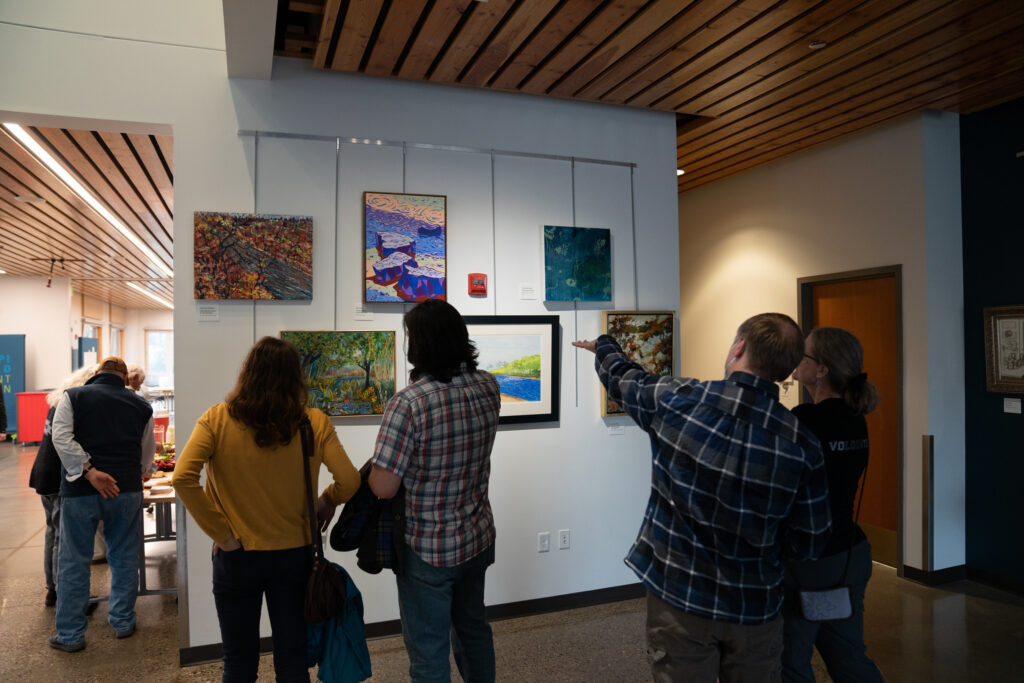
“STARS was developed by the campus sustainability community to provide high standards for recognizing campus sustainability efforts,” said AASHE Executive Director Meghan Fay Zahniser. “The University of St. Thomas has demonstrated a substantial commitment to sustainability by achieving a STARS gold rating and is to be congratulated for their efforts.”
Related article: This accomplishment follows other national recognition for sustainability efforts on campus, including “How St. Thomas Earned Its Top 50 Green College Ranking,” which explores how sustainability is interwoven throughout campus.
Related video:
